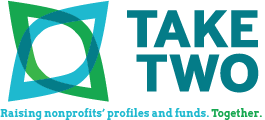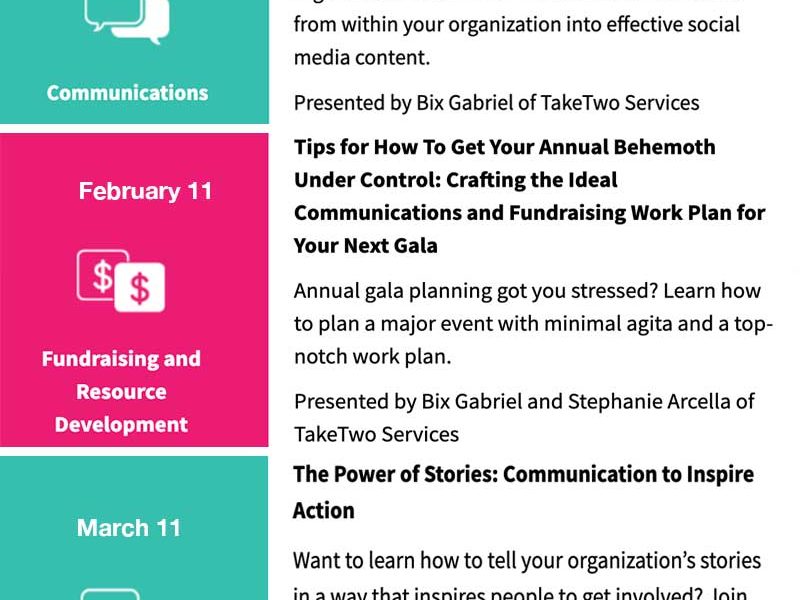
Conquer The Twin Peaks
When we talk about conquering “twin peaks”, we’re not issuing a challenge to David Lynch. (For all of you born in 2010 or after, David Lynch is the brain behind the1990s’creepy cult classic TV series – Twin Peaks .) We love the show Twin Peaks, but our goal here is to help non-profits scale and conquer the (sometimes) insurmountable seeming “twin peaks” of communications and development.
Talking and working with nonprofits, we have found three areas that often make the “twin peaks” daunting:
CAPACITY: Many nonprofits are born out of the passion and conviction to do good and make a better world. So the majority of time and know-how are (rightly) expended on programming and services. But the pay-off in investing in development and communications staff impacts every part of your organization. If time is the issue, is there a way to shift responsibilities around to make sure that communications and development are integrated into your program work? If knowledge is lacking, are there trainings your staff can attend? Or, (at the risk of sounding self-serving) can hiring a consultant help? Trained volunteers too can be a huge help – from organizing fundraisers to tweeting on your behalf.
SILOS: In our world of 24/7 communication, it’s tough to coordinate messaging. This is especially true in large organizations with full-fledged development and communications departments that reside on separate wings. But, there’s an often-overlooked meeting point: your organization’s programs. Both development and communications need programmatic info. Why not work together to gather the information each department needs? Create a simple check-in system that ensures that everyone is on the same page – and if that system includes an in-person sign-off, take the opportunity to visit your colleagues and see how the other half lives.
FEAR: This is the hardest for most of us to admit to, but fear is universal. Both development and communications ask nonprofits to answer what can seem like tough questions: – why do you do what you do; who are you serving exactly, for example. And opening up the organization to scrutiny – even internally – can be scary. But the reality is that lots of nonprofits do incredibly inspiring work with a small staff and even smaller budgets. So the hard questions are actually great questions. Because they open the door to documenting the great work, expressing it convincingly and best of all, leveraging it to get more support for what you do.
Of these three areas, what do you think is holding your organization back most? Or is there another completely different factor? We want to know! Tell us (and our readers) what makes communications and development seem like Mount Everest and Kilimanjaro to you and your organization. (Umm, yes, we know these peaks aren’t related, much less twins.)





